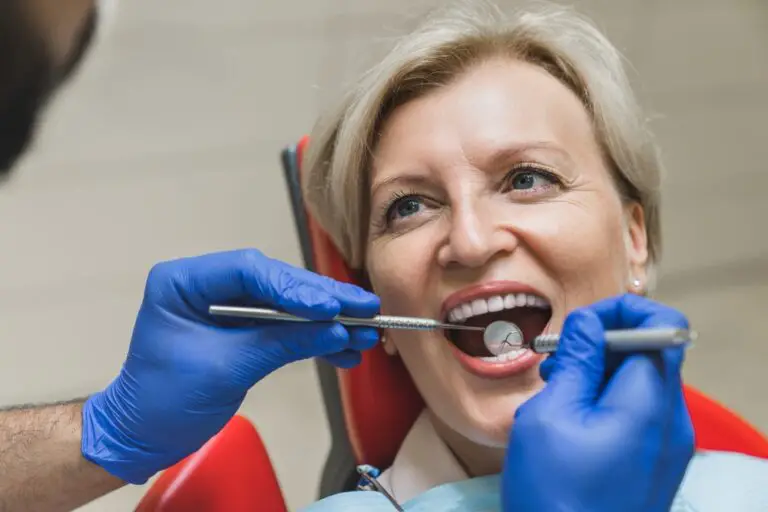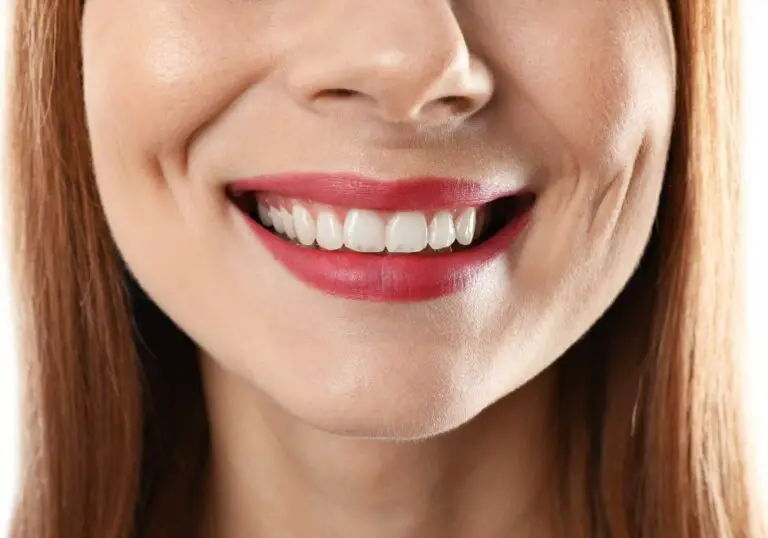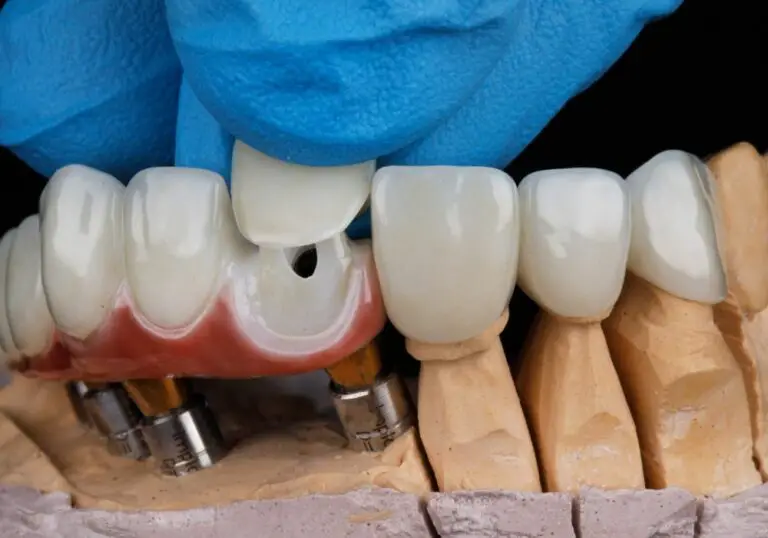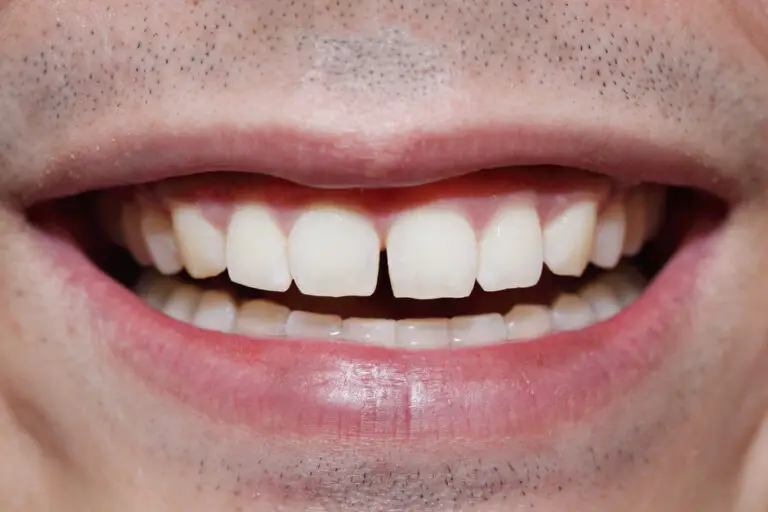Having abnormally sharp, pointy, or conical teeth is a dental trait that some people are born with, while others develop it later in life. Teeth with noticeable points or pegs seem to deviate from the typical rounded, edge-free teeth most people have. This article will take an in-depth look at the various causes of pointed teeth and their implications for dental health and appearance.
What causes pointed teeth?
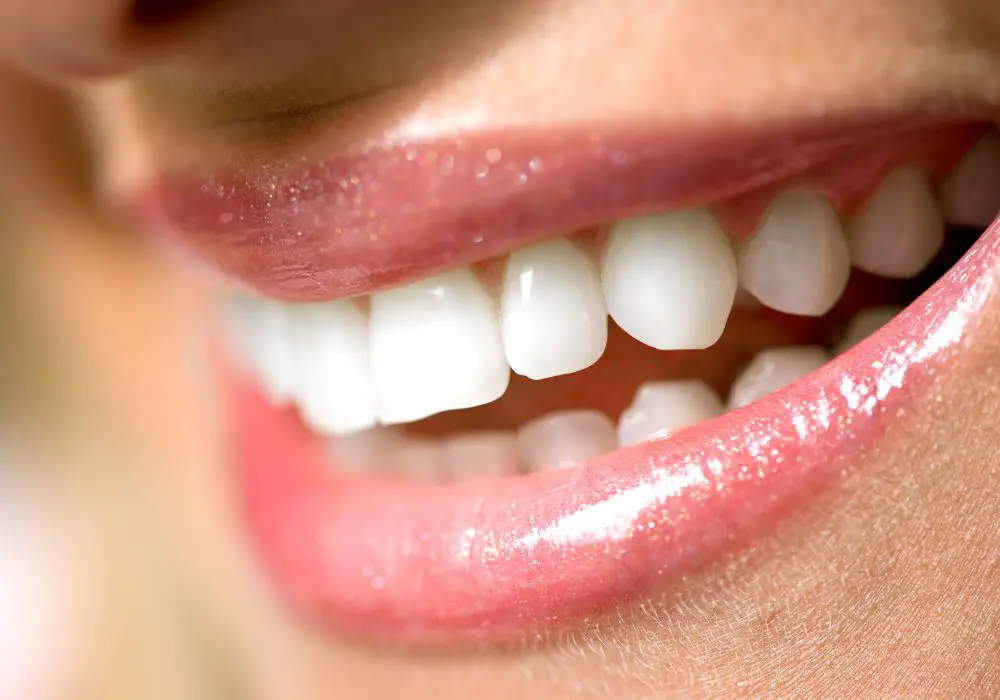
There are several potential genetic, developmental, and environmental factors that can make teeth appear more pointed or peg-shaped.
Genetic dental traits
Genetics play a major role in determining tooth size, shape, and alignment. Many inherited dental conditions can cause teeth to look pointier or more peg-like than normal. Some examples include:
- Peg-shaped laterals – Also called “peg lateral incisors” or “fang teeth”, these are upper lateral incisors that are smaller and pointier than normal. They often have a cone-like appearance and may be rotated. Peg laterals commonly run in families and affect a majority of people with Down syndrome.
- Shovel-shaped incisors – Most commonly affecting the upper incisors, these teeth have a noticeable ridge along the backside giving them a shovel-like, scoop-shaped appearance. The palate-facing cusps are also pointier and more pronounced. Shoveling is highly prevalent in Mongoloid dental groups, affecting over 90% of some Asian populations. Native Americans may also frequently exhibit shovel-shaped incisors.
- Supernumerary teeth – Extra teeth that grow in abnormal positions can resemble small pointed fangs. Supernumerary incisors are sometimes called “mesiodens.” Although supernumerary teeth are rather uncommon, they seem to occur more often in patients with genetic syndromes like cleft lip and palate.
- Enamel hypoplasia – This condition causes the enamel to be underdeveloped, thin, soft, and translucent. The lack of full enamel coverage leads to teeth appearing more yellow, pointed, and cone-like. Enamel hypoplasia has various causes including birth injury, premature birth, congenital disorders, and diseases that affect enamel formation.
Childhood factors
Besides genetics, conditions and events during childhood can also affect normal dental development and lead to pointier teeth later on:
- Malnutrition – Malnutrition during childhood while permanent teeth are still forming can impair enamel development and cause teeth to appear more thin, translucent, and conical. Vitamin D and calcium deficiencies are particularly detrimental. This effect is often seen in archeological skulls of hunter-gatherers with very worn, peg-shaped teeth, likely resulting from childhood malnutrition.
- Fluorosis – Consuming too much fluoride during enamel formation can cause subsurface porosity and staining, making teeth weaker and more prone to wearing down into pegs. Mild dental fluorosis is common, but severe forms can dramatically increase conical, misshapen teeth.
- Radiation therapy – Cancer patients who had radiation therapy to the jaw at a young age are also at risk for enamel hypoplasia, shortened roots, and permanent teeth coming in oddly shaped or pointed.
- Birth injuries – Trauma to a baby’s mouth during childbirth in rare cases may damage developing tooth buds, impairing later enamel quality and resulting in teeth coming in weaker, thinner, and pointier.
- Childhood oral habits – Thumb-sucking, tongue thrusting, and lip sucking habits that exert excessive pressure on the front teeth for years can alter their natural rounding, causing the front teeth to appear more bucked or conical.
Adult factors
Some environmental factors and behaviors can wear down normal adult teeth over time into pointier peg shapes:
- Bruxism – Chronic teeth grinding causes accelerated wear and erosion that gradually take down the edges of back teeth from round to nubby pegs. Front teeth may also chip and flatten from grinding.
- Gum disease – Periodontal disease/gum infections cause progressive gum recession and bone loss. As more tooth root becomes exposed, previously short, blunt teeth may start to look longer, thinner, and pointier.
- Acidic diets – Frequent consumption of acidic foods and drinks wears away enamel and amplifies tapering of teeth. Bulimics who purge acid stomach contents chronically can rapidly erode teeth into sharp, splintered points.
- Abrasion – Aggressive brushing, oral piercings dragging across teeth, and habits like nail-biting that put pressure on teeth may accelerate wear into pointy pegs over time. Some abrasive cultural practices like teeth chipping and filing can also intentionally reshape teeth into sharp points.
Normal anatomical variations
For some people, having slightly more pointed cusp tips or canine teeth is simply within the normal range of anatomical variation in their natural tooth shape and not necessarily pathological:
- Sharp canine teeth – The upper and lower canine teeth are normally meant to have a pointed shape for piercing and tearing food. But in some people these points seem abnormally long, sharp, or fang-like. This may simply reflect a naturally inherited shape.
- High, sharp molar cusps – Back molar teeth normally have rounded cusps for chewing, but some people inherit sharper, higher, more pronounced cusp peaks that can resemble mini-fangs along their back molars and premolars.
- Protruding teeth – In an overjet with upper front teeth protruding, overlapping lower teeth more than usual, the downward tapering of incisors may make them look longer and pointier.
Prevalence of pointed teeth by population
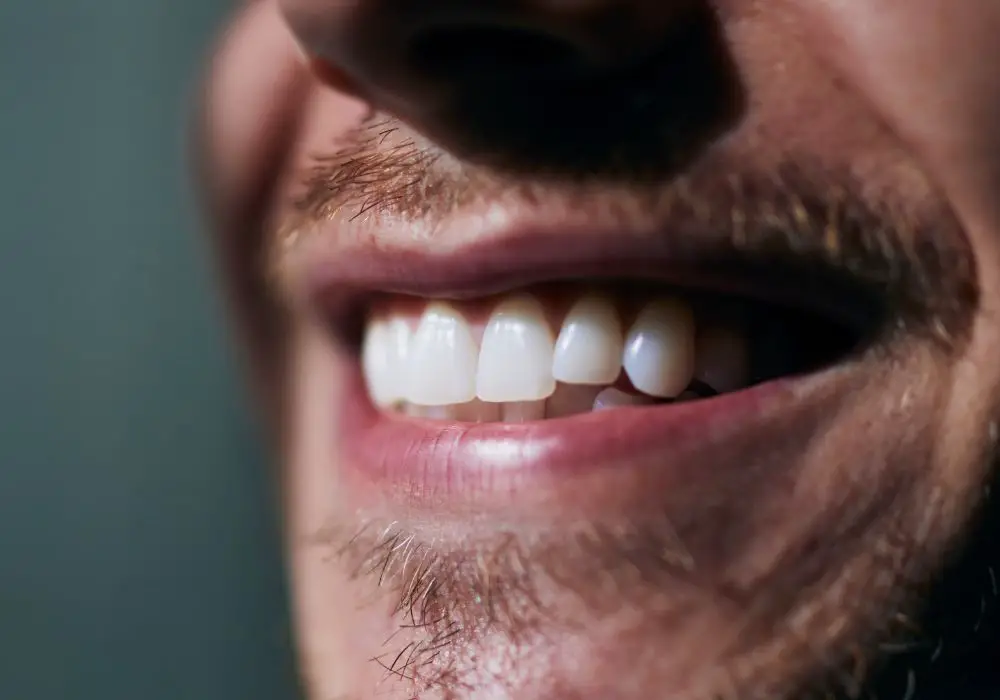
The occurrence of abnormal dental points seems to be more frequent in certain populations:
- Asians – Shovel-shaped incisors affect over 90% of indigenous Siberians, Mongoloids, Eskimos, Native Americans, and other Asian groups. This appears to be an evolutionary genetic adaptation to a hunter-gatherer diet.
- Hunter-gatherers – Skulls of ancient Stone Age hunter-gatherers commonly show extremely worn teeth shaped into rounded pegs, likely due to abrasive diets consumed from childhood.
- Indigenous groups – Isolated native populations often display peg-shaped teeth, enamel irregularities, and other defects indicative of malnutrition, starvation, or limited healthcare during early childhood tooth development.
- Down syndrome – Up to 96% of people with Down syndrome have characteristic peg-shaped, small, pointed lateral incisors. Congenitally missing teeth are also common.
- Cleft lip/palate – This birth defect disrupts tooth formation and is associated with supernumerary peg teeth in up to 42% of cases.
Overall, abnormally sharp or conical teeth do seem much less prevalent in most modern societies today compared to ancestral hunter-gatherers or remote agrarian populations. Advances in nutrition, dentistry, and healthcare have likely benefited dental development. Cosmetic dentistry can also easily reshape or cover pointy teeth now.
Problems caused by pointed teeth
In some situations, pointed teeth pose higher risk for certain dental complications:
Fractures – Narrow, sharp points and cusp tips are weaker and prone to chipping, cracking, and breaking under pressure or impact. Fractures are especially common with peg-shaped lateral incisors.
Tooth wear – Pointed cusps grinding against each other during chewing accelerates wear as forces are concentrated on smaller surface areas. This can rapidly erode teeth to nubs in some cases.
Plaque retention – Pointy grooves, ridges, and pits on teeth provide extra surface area for plaque to adhere to and aren’t easy to keep clean. Increased risk of tooth decay and periodontal disease.
Gum recession – Spiky pointed teeth, especially worn lower incisor pegs, are more likely to traumatize, erode, and irritate the tongue and gums. This leads to inflammation and receding gums over time.
Occlusion impairment – Extremely diminished, worn, fractured, or oddly shaped teeth can affect normal bite alignment needed for chewing efficiently. This is especially true with malformed supernumerary teeth.
Speech difficulties – Missing or malformed maxillary lateral incisors as seen in Down syndrome reduces natural spaces between teeth required for proper tongue positioning during speech.
Social/psychological – Despite their natural occurrence, fangs are often viewed negatively as “scary”, “creepy”, or “like a vampire’s teeth”, leading to social stigma and self-esteem issues.
However, being proactive with certain dental care measures can reduce risks associated with pointy teeth in most cases.
Dental treatments for correcting pointed teeth
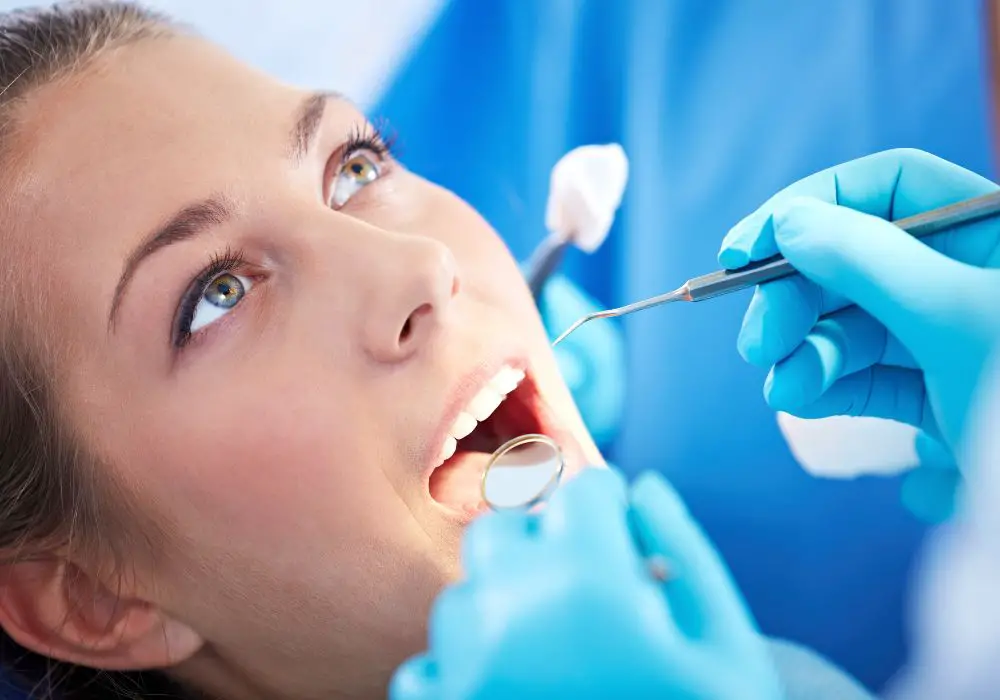
If problematic pointed teeth are causing any medical or social concerns, there are several effective options dentists can provide to reshape and restore teeth to appear more visually normal:
- Tooth reshaping – Also called odontoplasty or enamel shaping. Filing or sanding down pointed edges smooths out sharp teeth tips, rounds out high pointed cusps, and re-contours teeth edges for a blunt, safer appearance.
- Tooth bonding – Composite resin material can be molded onto teeth to mask jagged points or build up smaller, worn teeth for a more rounded, natural look.
- Dental crowns – Caps custom fabricated to fit over filed-down teeth can completely reshape and rebuild them into normal, smooth sizes and shapes. The enamel point is essentially hidden under porcelain, metal, or other crown material.
- Veneers – Thin laminates made of porcelain or composite bonding materials are adhered to the front of teeth. This masks underlying pointy or worn teeth with a white, smoothly rounded new outer surface.
- Braces – Orthodontics may camouflage pointy teeth by aligning crowded, overlapping teeth. It also rotates and guides eruption of extra or malformed teeth into more normal positions.
- Tooth extraction – Removing supernumerary, fractured, decayed, or problematic pointed teeth prevents further complications and makes space for reshaping adjacent teeth.
- Gum grafting – Thin, receding gums around pointy roots can be built back up via soft tissue grafts to reduce sensitivity and improve aesthetics.
With today’s wide array of cosmetic and restorative dental treatments, people living with naturally abnormal pointy teeth can feel confident achieving a healthier, more normalized, beautiful smile.
Caring for naturally pointy teeth
For those who opt to keep their unique dentition, either by choice or lack of access to cosmetic dentistry, here are some tips for protecting pointy teeth:
- Use a soft-bristled toothbrush and be extra gentle with brushing to avoid damaging gums around sharp points. Use very soft picks to clean between teeth.
- Wear a custom nightguard or mouthguard during sports and sleep to prevent fractures and wear from grinding. Guards also protect gums.
- Apply fluoride toothpaste twice daily and get periodic fluoride varnish or gel treatments to strengthen enamel.
- Have dentist monitor closely for potential problems like decay in grooves, plaque build-up, gum recession, fracture cracks, etc.
- Consider bonding agents to smooth over minor rough spots that trap plaque or irritate cheeks.
- Accept your natural anatomy – prominent canines and high sharp cusps are an ancestral human trait after all! Fangs can be cool.
With proper care, most moderately pointy teeth can be maintained in good health and with confidence in your smile.
Frequently Asked Questions
What causes teeth to be pointy?
Genetics are the main reason, including inherited conditions like shovel-shaped incisors, conical supernumerary teeth, and thin enamel. Childhood malnutrition, fluorosis, and birth injuries can also affect developing teeth. Adult causes include severe wear, gum disease, and normal variations in canines and molar cusps.
Are pointy teeth bad for your dental health?
Potentially yes – sharp uneven points are mechanically weaker and prone to fractures, rapid wear, plaque retention, gum irritation, and other problems. However, being proactive with good dental habits and protective measures can reduce risks.
Do pointy teeth make it hard to bite or chew food?
In some cases, yes. Severely eroded, worn down, fractured, or misaligned teeth can cause discomfort, make it hard to incise food, and reduce chewing efficiency. Mild to moderate sharpness or thin enamel usually doesn’t impair biting or eating function too severely.
How can I permanently fix or hide my pointy teeth?
Reshaping, crowns, veneers, orthodontics, and extractions are effective dental treatments that can permanently alter the shape, contour, and appearance of pointy teeth. More conservative options include tooth-colored bonding or fillings to mask rough spots and smooth edges.
Should I just embrace my naturally pointy canine teeth?
If your sharper-tipped fangs don’t cause pain or oral health issues, there’s no reason not to confidently embrace their uniqueness as your natural anatomy. Some even find pronounced canines attractive. With good habits, pointy canines can remain functional andhealthy.
Conclusion
In summary, pointed, conical, or pegged teeth arise in some people due to a diverse range of genetic, developmental, and environmental influences. Their prevalence is declining in modern society, though still common in some ethnic groups. If severe enough to impair dental function or social confidence, pointed teeth can be restored with today’s cosmetic options. For milder cases, diligent dental habits and self-acceptance will maintain dental health and an appealing smile. In the end, pointy teeth are simply manifestations of natural human dental variety.


